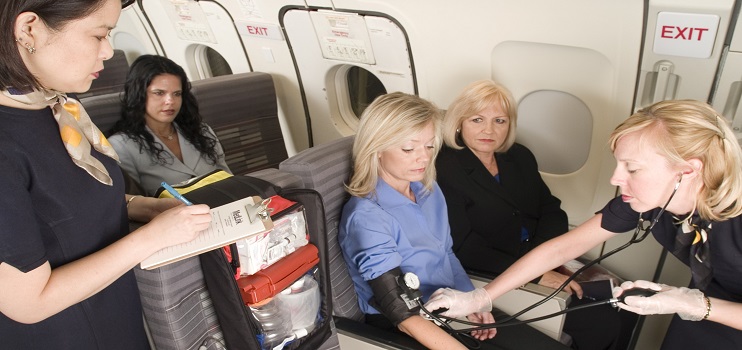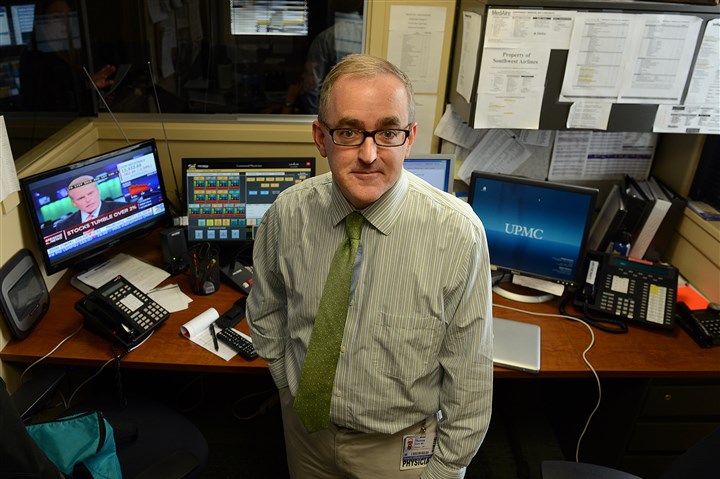By Robert Davis and Anthony DeBarros, USA TODAY
The death of an American Airlines passenger during a flight from Haiti to New York last month has cast a spotlight on the growing number of medical emergencies on commercial jets, a trend that largely has escaped public notice because airlines aren’t required to report such incidents.
 The clearest picture of the problem comes from MedAire, an Arizona-based company that provides emergency medical advice to airlines that carry nearly half of the 768 million passengers on U.S. flights each year. A MedAire analysis, done at USA TODAY’s request, indicates the rate of medical emergencies aboard commercial flights nearly doubled from 2000 to 2006, from 19 to 35 per 1 million passengers.
The clearest picture of the problem comes from MedAire, an Arizona-based company that provides emergency medical advice to airlines that carry nearly half of the 768 million passengers on U.S. flights each year. A MedAire analysis, done at USA TODAY’s request, indicates the rate of medical emergencies aboard commercial flights nearly doubled from 2000 to 2006, from 19 to 35 per 1 million passengers.
SURVEY: Share what you know about in-flight emergencies with USA TODAY
YOUR VIEW: How should in-flight emergencies be handled?
The increasing rate of medical incidents, health and aviation analysts say, partly reflects a collision of two factors:
• The rising number of older passengers as the 79 million baby boomers begin entering retirement but continue traveling habits established when they were younger.
• Flights that go farther and last longer than was typical several years ago. In a sample of 11 airlines served by MedAire, the average length of a flight rose from 1,233 miles in 2000 to 1,347 miles in 2006.
Medical crises are the force behind a rising number of emergency landings, says Joan Sullivan Garrett, MedAire’s chairman.
“If you are ill, an airplane is the worst place to be,” says David Stempler, president of the Air Travelers Association. “You are trapped at 35,000 feet.”
Airlines and industry groups such as the Air Transport Association have mostly resisted revealing details about medical emergencies, saying such information is hard to collect and can be misinterpreted. And because airlines aren’t required to file such reports, more is known about in-flight emergencies involving animals than humans. The Department of Transportation requires airlines to report animals’ deaths on commercial flights; last year there were 14, the DOT says.
 The death of Carine Desir on an American Airlines flight from Haiti to New York on Feb. 22 raised questions about how airlines handle medical emergencies. Desir’s family has questioned whether the airline responded quickly enough with oxygen to save her.
The death of Carine Desir on an American Airlines flight from Haiti to New York on Feb. 22 raised questions about how airlines handle medical emergencies. Desir’s family has questioned whether the airline responded quickly enough with oxygen to save her.
The airline says its own review of the incident found the crew did all it could to help Desir. The New York medical examiner later found Desir died from complications of heart disease and diabetes.
MedAire says passengers with diabetes, seizure disorders and heart and respiratory ailments account for 23% of in-flight deaths and 29% of medically related flight diversions.
A USA TODAY analysis based on a variety of sources offers a fuller picture of in-flight medical incidents:
• There are more deaths from in-flight medical emergencies than from airline accidents. Since Jan. 1, 2003, there have been 95 passenger fatalities from airline accidents, according to the National Transportation Safety Board. MedAire reports that 219 passengers have died on the U.S. flights it analyzed during the same period. The company says the actual number is probably much higher because it tracks fewer than half of all U.S. airlines.
• In cases in which MedAire had information about the age of passengers with medical emergencies, those 51 and older accounted for 83% of 63 in-flight deaths in 2006. That age group accounted for 59% of 550 medical-related flight diversions in 2006.
• Airline industry trade groups such as the Air Transport Association (ATA) and the Regional Airline Association say in-flight medical emergencies are rare. But USA TODAY found it is common for emergency personnel to meet a plane carrying a sick passenger.
The newspaper obtained 911 dispatch data from 10 agencies that operate major airports. Eight agencies reported that crews were sent to help a very sick passenger at least once a week. The airports include some of the nation’s busiest, such as Los Angeles International and Dallas-Fort Worth International.




